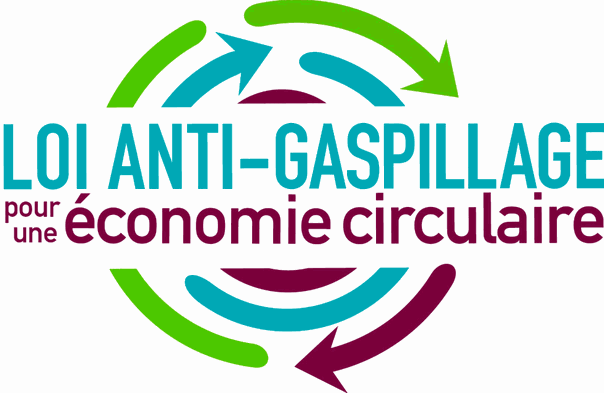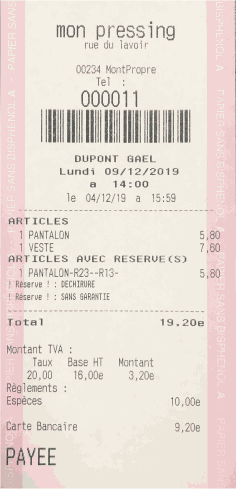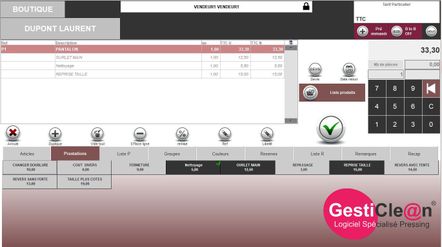Receipts printing
Following the withdrawal of Bisphenol A from thermal paper, a new regulation is about to come up: interdiction of receipts printing.
According to the article L. 541‑15‑9 of the environmental code, as it results from the article 8 of the present law:
« IV. – On the 1st January 2022 at the latest, the automatic printing and distribution of receipts in selling areas shall be forbidden, unless requested by the customer. [...]"See AMENDMENT N°CD1417 (Rect) here

Definitions
Let’s start with some definitions…
What do we call “receipt”? It is the tax proof for a payment provided by a business when goods are paid. The receipt is a purchase proof of goods or services sold and is equivalent to an invoice.

Specific case of dry cleaning
And obviously some exceptions… otherwise it would be too simple:
- the account customers with deferred payment upon presentation of monthly invoice
- the CleanWay customers with payment for services based on a monthly list (CleanWay points)
- the customers with credit refill cards who pay services in advance
The receipt is the cashing tax proof that allows to note the turnover cashed. Therefore, it must be printed only at the time of payment.
If payment is at drop off, the receipt notes the money transfer and generates the turnover corresponding to the service sold. But the service is not performed yet. Then it is a turnover statement before the work is performed.
Sometimes, the work cannot be performed. Then you need to “cancel” the sale and adjust the turnover.
If payment is at delivery, the receipt notes the money transfer and the turnover, which will correspond to the real service performed, but with an interval in between. If the customer does not pick up his garments within 6 months, then there will be a gap between the cashed turnover and the work actually done. So at the end of the fiscal year, it is important to reintegrate the work done on non-paid services, in order to have an accurate turnover.
How does GestiClean software work?
Our software program considers the garment dropped-off as a medium to sell services. We register trousers with no price because we do not sell them. Then we list services to perform on the garment dropped off.
The dry cleaner performs what is called a “long sale”. This means that the work generating the turnover, and usually the invoice of this work, will be performed later that day, or week or sometimes even after that.

The order process is the following:
1. Customer identification
2. New order
3. Entry of garments with related services
4. Choice of delivery date
5. Payment screen
6. Tickets printing
Focus on tickets printing:
a. Customer drop-off ticket: allows the delivery
b. Receipt: payment proof (invoice)
c. Duplicate of customer drop-off ticket: allows production follow-up
d. Garment tags: identification of dropped off garments
Today, the applicable rules to the receipt (b) printing in France are the following: the receipt must be printed for all transactions exceeding €15.24. This printing is deactivated by default in GestiClean, but can be easily activated with the possibility to set an automatic printing rule at €15.24 (or any other amount). In the profession, most dry cleaners choose not to print this receipt. QED > most of us respect this rule already.
However, this majority of dry cleaners are not aware of this, because most of them are confused between the receipt (b) and the customer drop-off ticket allowing the delivery (a). It is often the case when the order is paid at time of delivery. This can be explained because payment information is noted on the drop-off ticket. GestiClean works that way in order to answer the needs and habits in the profession.
Conclusion
Why stop printing and how to make systems evolve?
The main reason of these rules is the environmental protection. To limit useless waste and harmful products, knowing that all these tickets end up in household waste.
What solutions does Inforum work on to make GestiClean more “ecological”?

Article written by Pascal Berardozzi, Consultant / Master Dyer
Dry cleaning receipts: to print or not to print?